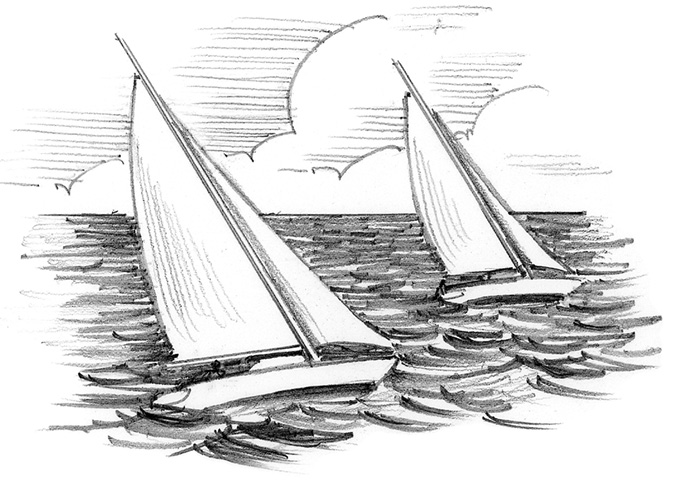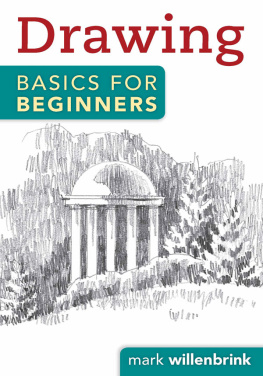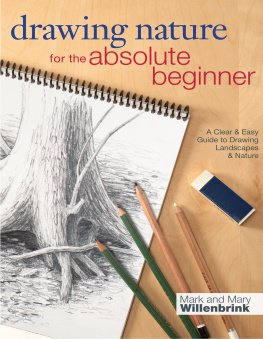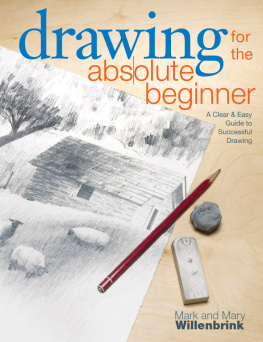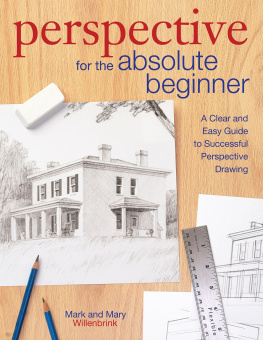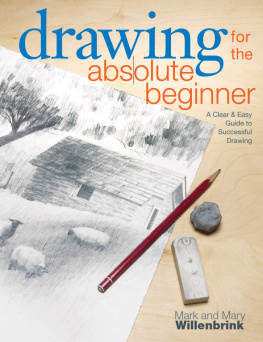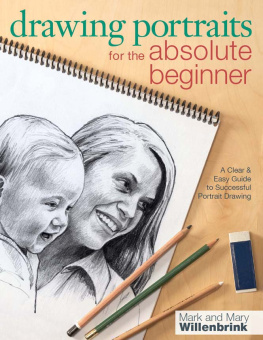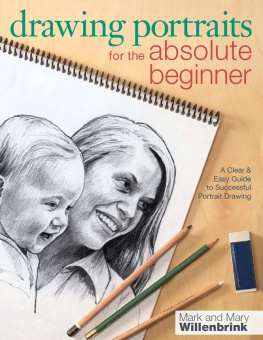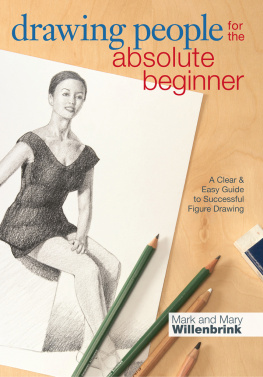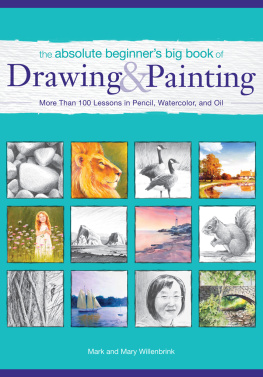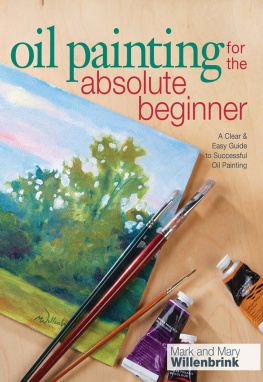Contents
DRAWING FOR THE ABSOLUTE BEGINNER:
Composition
MARK & MARY WILLENBRINK
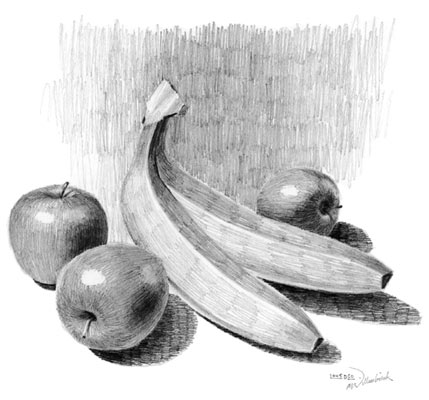
About the Authors

Mark Willenbrink is a freelance illustrator and fine artist whose work has been displayed in fine art shows, with several paintings receiving awards. Mark also teaches art classes and workshops using demonstration, simple instructions and professional tricks to help his students achieve beautiful artwork they can be proud to display.
Mary Willenbrink has her masters degree. She is a Christian counselor and author, but feels her highest calling is to be home to raise her children.
As a husband and wife team, Mark and Mary have authored and illustrated Watercolor for the Absolute Beginner (North Light, 2003), and the book has been translated into several languages. Marks writings and illustrations have been featured in a number of other art instruction books. Mark is a contributing editor for Watercolor Magic Magazine. His regularly featured column, Brush Basics has been rated as a favorite among the magazines readers.
Mark and Mary reside in Cincinnati, Ohio, with their three children.
Composition
Composition involves the arrangement of the elements in an artwork. Though composition is inherent to all art, good composition involves planning and forethought. A strong composition entertains the viewer, while a weak composition may make the viewer feel indifferent toward the artwork. A good composition is cleverly planned to lead the viewer through the scene.
Aspects of composition include symmetry, the number and placement of elements within the scene, and how the scene is framed. As you plan your composition, you will also decide on a format, create a path for the viewers eye, and look for trouble spots.
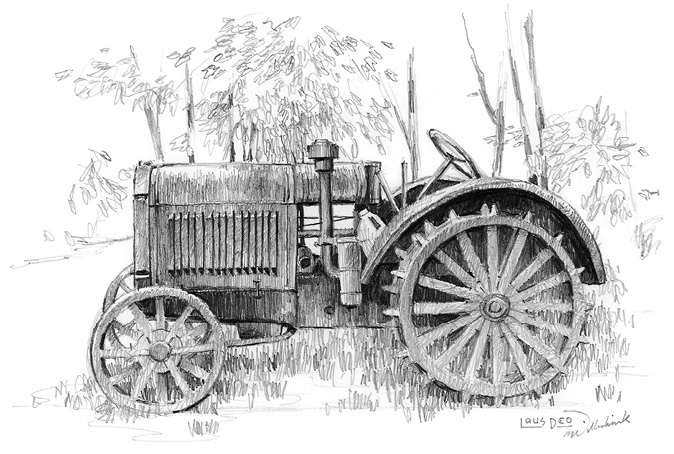
The Old Tractor
Graphite on drawing paper
11" 14" (28cm 36cm)
Arranging the Elements
Symmetrical composition can be useful if you want to make your subject look orderly and structured, but it often comes across as bland. Asymmetrical composition is preferable because it makes the objects in your drawing seem more neutral.
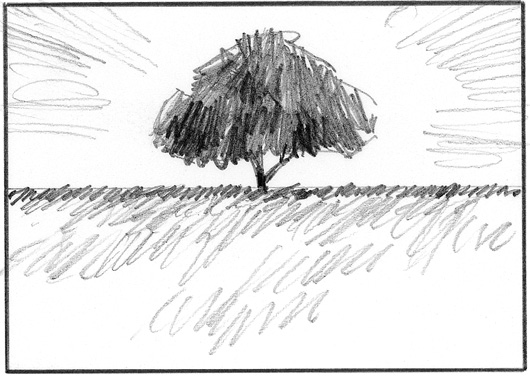
Symmetrical Composition
Though this scene is evenly balanced, it has two strikes against it: the horizontal line splits the scene exactly in half, and because the tree is placed in the middle of the composition, the scene looks contrived.
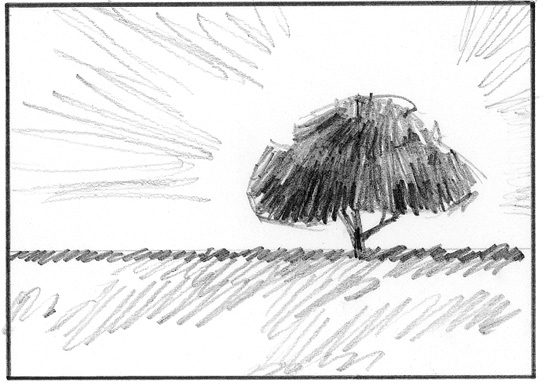
Asymmetrical Composition
Moving the tree off center makes the scene asymmetrical. The viewer should find this more appealing and realistic.
Using a Grid for Asymmetrical Composition
One method for achieving balance in an asymmetrical composition is to divide the picture into nine equal rectangles. Use the intersections of these gridlines to locate major elements in the scene.
Using Thumbnail Sketches
Thumbnail sketches allow you to plan what the finished drawing will look like. Examine the differing placement of lights and darks in these examples.

Number of Elements
The number and placement of elements can affect the balance of the composition and by leading the viewer through the scene. An odd number is usually more interesting than an even number. Evens and odds can also refer to the number of elements reaching the edge of the artwork, which affects the way the viewers eye travels in and out of the composition.
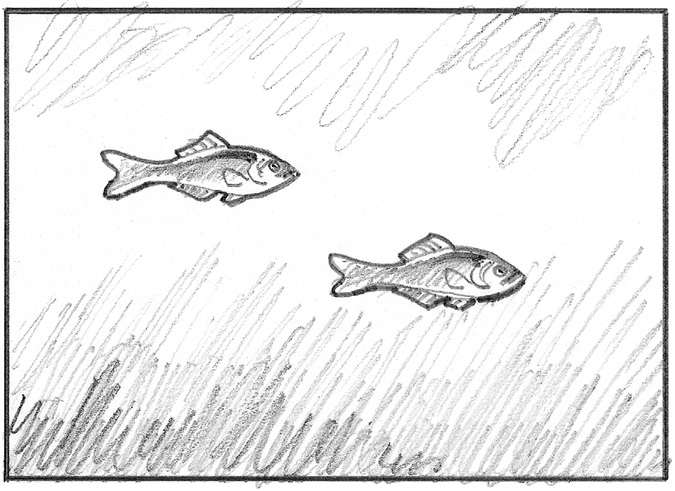
Even Number of Elements
An even number of elements can seem uninteresting. The viewers eye has nowhere to go but from one fish to the other.
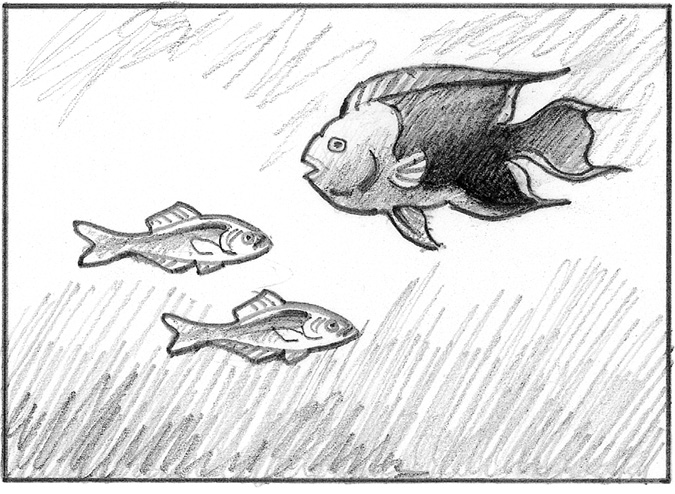
Odd Number of Elements
An odd number of elements is usually more interesting than an even number. This scene has an odd number of elements, with one dominant and two subordinate elements. The viewer is first drawn to the big fish, then to the smaller fish, then back to the big fish.
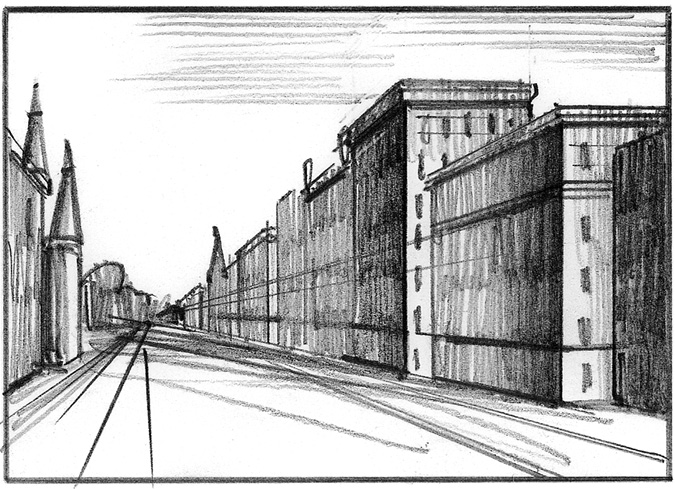
Even Number of Elements at the Edge
Evens and odds can also refer to the number of elements that reach the edge of the artwork. In this example, the buildings are touching the edge on the left and the right, making an even number.
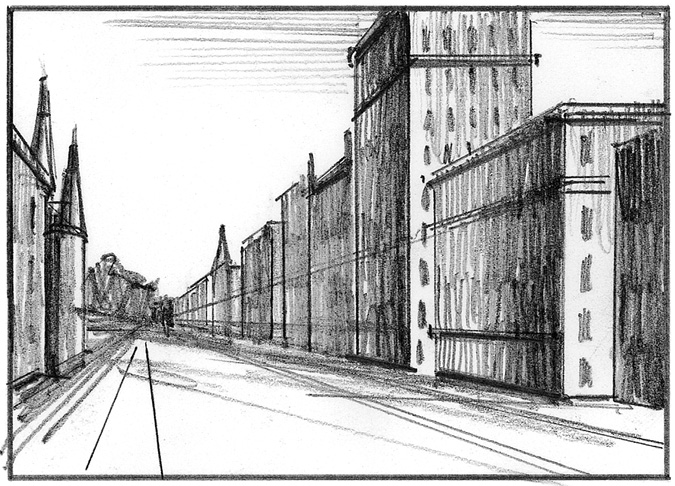
Odd Number of Elements at the Edge
A simple change allows the buildings to touch the edge on the left, right and top, creating a more interesting composition.
Cropping and Formatting
Some scenes contain too much visual information to include in a composition, and it can be hard to determine where to begin and what to leave out. By looking through a viewfinder, you can visually crop the composition before you pick up the pencil. Once you have determined the area you want to include, you will find the drawing easier to manage.
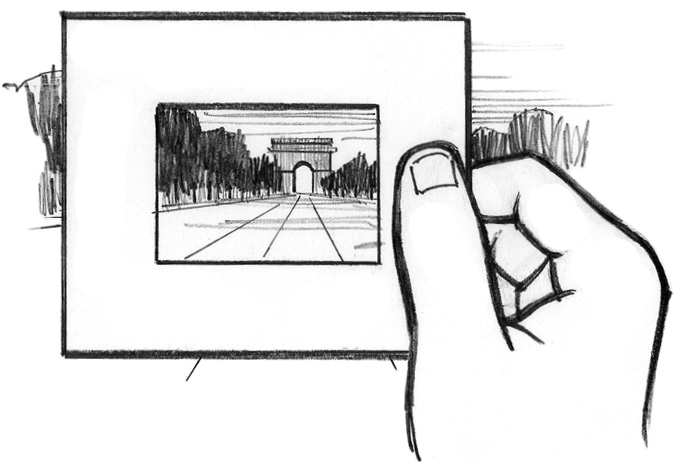
Using a Viewfinder
One method for planning a composition is to crop the scene with a viewfinder, a piece of cardboard with a cutout like a window frame. This is especially helpful when working outdoors, when the subject may seem overwhelming and you dont know where to focus your attention.
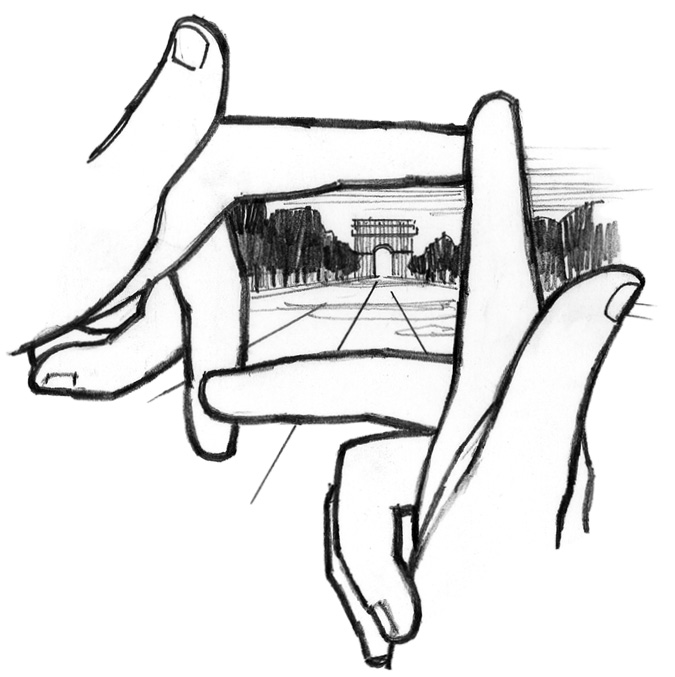
Using Your Fingers
Forming a rectangle with your fingers is another way to crop a scene without using any special equipment.
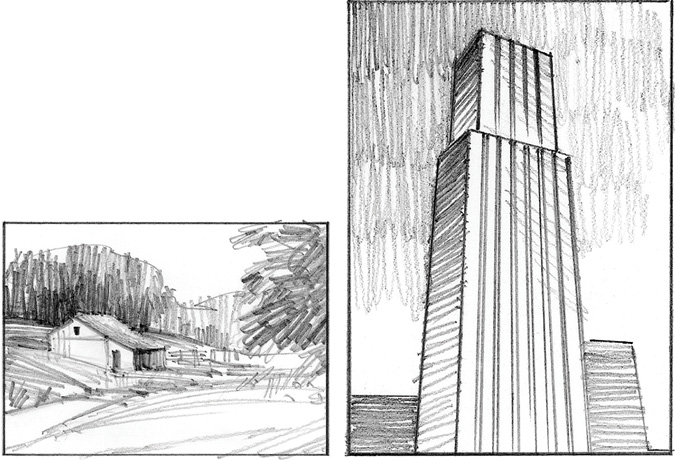
Format Affects a Compositions Mood
The mood of a picture can be accentuated
by its overall shape, or format. A horizontal format tends to give a stable, more serene feel, while a vertical format can feel more impressive or powerful.
